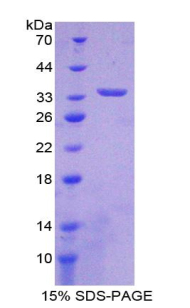Recombinant Interleukin 33 (IL33) 

DV27; C9ORF26; IL1F11; NFHEV; Interleukin-1 Family, Member 11; Nuclear factor from high endothelial venules
Overview
Properties
- Product No.RPB980Hu02
- Organism SpeciesHomo sapiens (Human) Same name, Different species.
-
Applications
Positive Control; Immunogen; SDS-PAGE; WB.
If bio-activity of the protein is needed, please check active protein.
Research use only - DownloadInstruction Manual
- CategoryCytokineInfection immunity
- Source Prokaryotic expression, Host E.coli
- Endotoxin Level<1.0EU per 1µg (determined by the LAL method)
- Subcellular LocationNucleus, Secreted, Chromosome
- Molecular Mass 34.4kDa, Accurate 34kDa(Analysis of differences refer to the manual)
- Residues & TagsMet1~Thr270 with N-terminal His Tag
- Buffer FormulationPBS, pH7.4, containing 0.01% SKL, 5% Trehalose.
- Traits Freeze-dried powder, Purity > 95%
- Isoelectric Point9.0
Share your citation
Upload your experimental result
Review
Leave a message
Loading...
Sign into your account
Share a new citation as an author
Upload your experimental result
Review
Please attach serial No. on instruction manual


Contact us
Please fill in the blank.
Name*
Organization
Address
E-mail address*
Telephone
Inquiry*
Verification code*

Sequence

Usage
Reconstitute in 10mM PBS (pH7.4) to a concentration of 0.1-1.0 mg/mL. Do not vortex.
Storage
Avoid repeated freeze/thaw cycles. Store at 2-8°C for one month. Aliquot and store at -80°C for 12 months.
Stability
The thermal stability is described by the loss rate. The loss rate was determined by accelerated thermal degradation test, that is, incubate the protein at 37°C for 48h, and no obvious degradation and precipitation were observed. The loss rate is less than 5% within the expiration date under appropriate storage condition.
Increment services
-
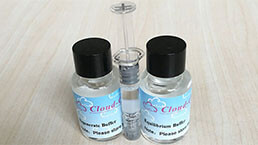 Endotoxin Removal Kit
Endotoxin Removal Kit
-
 BCA Protein Quantification Kit
BCA Protein Quantification Kit
-
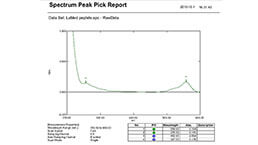 Protein Labeling Customized Service
Protein Labeling Customized Service
-
 Molecular Mass Marker for Protein
Molecular Mass Marker for Protein
-
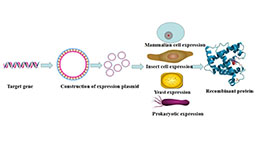 Recombinant Protein Customized Service
Recombinant Protein Customized Service
-
 Monoclonal Antibody Customized Service
Monoclonal Antibody Customized Service
-
 Polyclonal Antibody Customized Service
Polyclonal Antibody Customized Service
-
 Protein Activity Test Experiment Service
Protein Activity Test Experiment Service
-
 Immunoprecipitation (IP) Experiment Service
Immunoprecipitation (IP) Experiment Service
-
 Buffer
Buffer
-
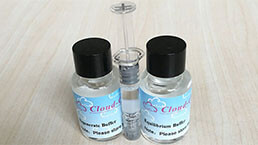 Endotoxin Removal Kit II
Endotoxin Removal Kit II
-
 Real Time PCR Experimental Service
Real Time PCR Experimental Service
-
 Spike RBD Protein (S-RBD)
Spike RBD Protein (S-RBD)
-
 Protein G
Protein G
-
 Protein A
Protein A
Citations
- Interleukin-33, matrix metalloproteinase-9, and tissue ınhibitor of matrix metalloproteinase-1 in myocardial infarctionPubMed: PMC3604606
- CXCL13 blockade attenuates lupus nephritis of MRL/lpr micePubMed: 26456520
- Epithelial Cell-Derived Cytokines Contribute to the Pathophysiology of Eosinophilic Chronic RhinosinusitisPubmed:26540312
- The Expression and Regulation of Interleukin-33 in Human Epidermal Keratinocytes: A New Mediator of Atopic Dermatitis and Its Possible Signaling Pathway.pubmed:27348082
- IL-33 circulating serum levels are increased in patients with non-segmental generalized vitiligopubmed:27388717
- Chrysin Protects Rat Kidney from Paracetamol-Induced Oxidative Stress, Inflammation, Apoptosis, and Autophagy: A Multi-Biomarker Approach. pubmed:28134775
- Association of IL-33, IL1RL1 gene polymorphisms with serum IL-33 levels and risk of asthma in adults and asthmatic bronchitis in children (Chinese)10.1080:13102818.2018.1471361
- Role of IL-33 and ST2 signaling and inflammatory responses in non-small cell lung cancer172341
- Group II innate lymphoid cells and microvascular dysfunction from pulmonary titanium dioxide nanoparticle exposurePubmed: 30413212
- Interleukin-33 serum levels in postmenopausal women with osteoporosisPubmed: 30846811
- Tumor-Derived Lactic Acid Contributes to the Paucity of Intratumoral ILC2sPubmed: 32101749
- Relationship of microbial profile with airway immune response in eosinophilic or neutrophilic inflammation of asthmaticsPubmed: 32141256
- Qingfei oral liquid downregulates TRPV1 expression to reduce airway inflammation and mucus hypersecretion injury caused by respiratory syncytial virus infection …
- Aggravation of Airway Inflammation in RSV-Infected Asthmatic Mice Following Infection-Induced Alteration of Gut Microbiota
- Inhibition of NF-κB/IL-33/ST2 Axis Ameliorates Acute Bronchiolitis Induced by Respiratory Syncytial Virus34395633
- Elevated Levels of IL-33, IL-17 and IL-25 Indicate the Progression from Chronicity to Hepatocellular Carcinoma in Hepatitis C Virus PatientsPubmed:35056005
- Dexmedetomidine Attenuates Hyperalgesia Induced By Brachial Plexus Root Avulsion By Restoring The GLT-1 Function Via PKA Signaling





